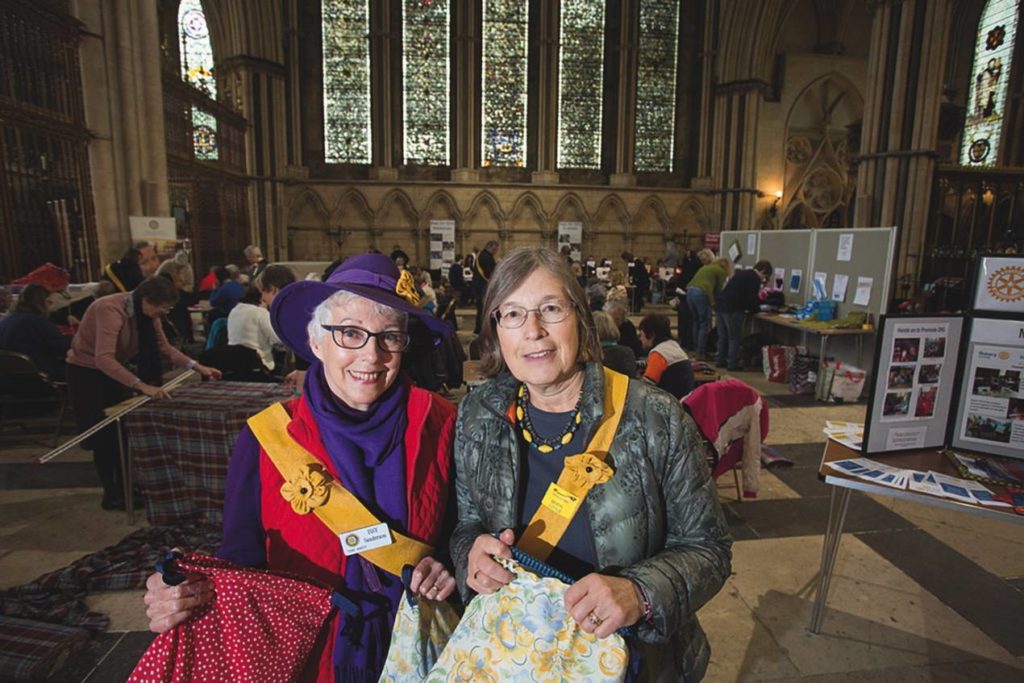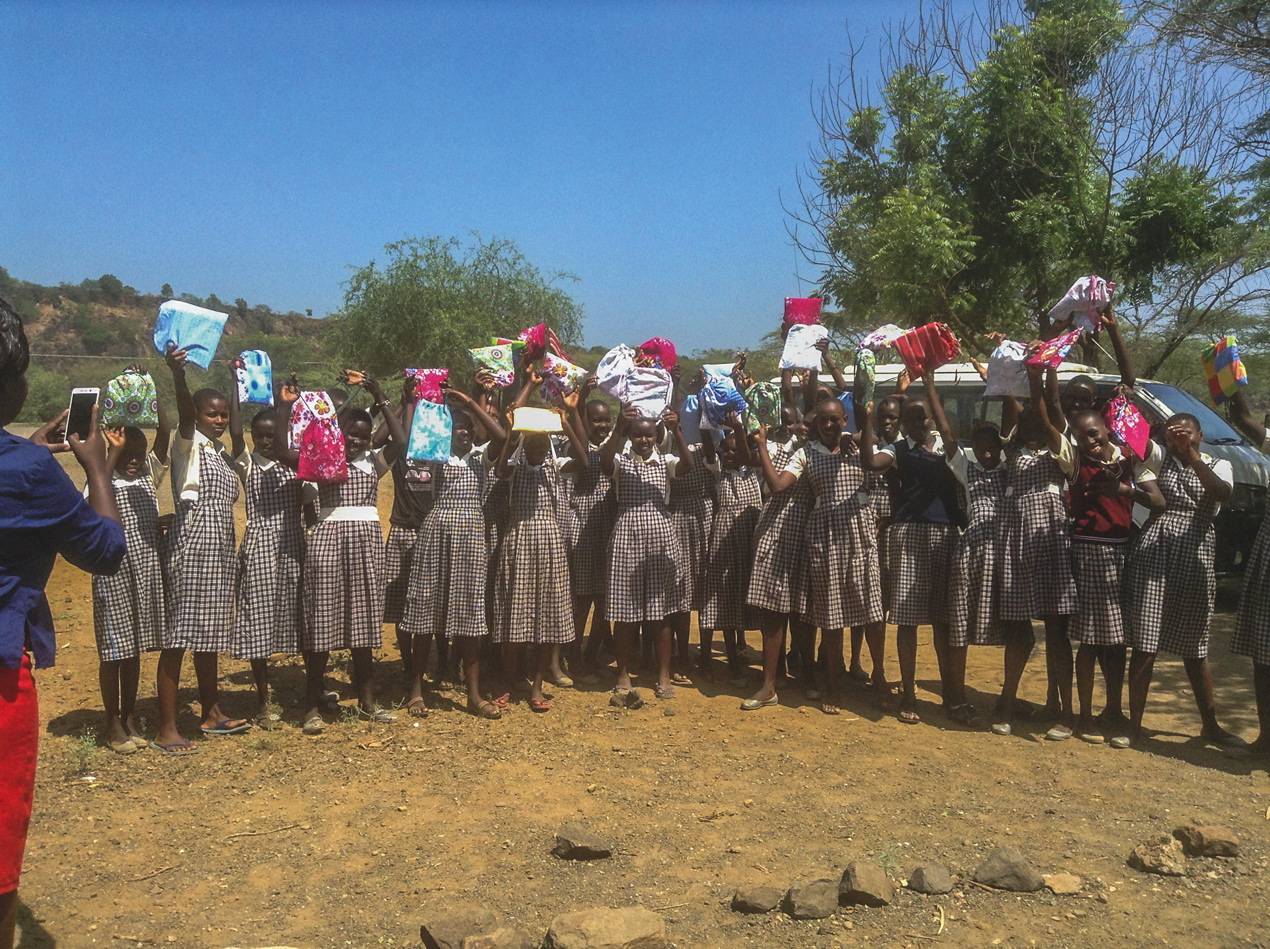Get your kit on
Many girls in developing countries lack menstrual products and are shamed during their periods. But a group of women in York make reusable feminine hygiene kits to send out to them
Days for Girls International was founded when Celeste Mergens was visiting an orphanage in Kenya and was struck by the question: what do girls here do when they have their periods?
The answer was shocking. The girls had to sit on cardboard and wait until they finished their menstrual cycle. This is common for women in some developing countries, who are isolated, shamed and even bullied during their periods. They are forced to stay separate from their communities and thus are vulnerable to danger from weather and wild animals. They are often at the mercy of others to bring them food.
Mergens, an American woman who was working on an aid mission in Kenya, responded with Days for Girls, which now has dozens of global groups whose members make reusable feminine hygiene kits for women and girls in developing countries. Once completed, these handmade supplies are sent with partnering organisations and are distributed in communities and schools.
Girls could be prevented from attending school because they were on their periods
One such Days for Girls group is in York, set up by Issy Sanderson, who spent most of her working life running self-help and community projects in developing countries. Supported by the Rotary Club of York Ainsty, it runs workshops in churches, schools and houses, as well the women’s prison in the city, the Asylum-Seekers and Refugee Centre in Middlesbrough, and two women’s refuges. An annual workshop at the York Minster has attracted hundreds of participants since it began three years ago. “I’m thrilled it’s having such a sustainable effect,” says Sanderson. “From such a small group of volunteers in York, the spin-off has been amazing.”
In each washable and re-usable kit, packed into a colourful drawstring bag, girls receive a washcloth, two pairs of panties, eight liners (squares of soft absorbent printed brushed cotton or flannelette which are tri-folded and used as pads) and two shields. The shields are the base of the kit, and are made of patterned cotton fabric with pockets at each end that the pads are tucked into. The shield is fastened with press studs around the panties. Two zip-lock polythene bags are also included, so the stained liners can be stored until they can be washed in areas where water is scarce.
The strict requirements of the design ensure their versatility and practicality across continents. The cloth used must be brightly coloured, to disguise any stains, but may not have designs depicting insects, animals or people, for reasons of cultural sensitivity. The colourful square liners can be washed and laid to dry on bushes without arousing the suspicion of passers-by.
A Unesco report estimates that one in 10 girls in sub-Saharan Africa misses school while on their period. Beryl Little, who now co-leads the Days for Girls group alongside Sanderson, has seen the difference kits can make for school-girls first hand. She and her husband were inspired to begin an education charity in Kenya after a chance visit to a village school when they were on safari. She realised that the girls they were supporting could still be prevented from attending school even with their support, simply because they were on their periods.

On returning home, she attended a Days for Girls York workshop and began to get involved. On subsequent visits to Kenya, Little and her husband brought Days for Girls kits and started distributing them to the women and girls in the community. “They were so happy to get them,” she says. “And we were able to begin showing them how they can make the supplies themselves.”
Since its foundation five years ago, Days for Girls York has made kits for women and girls in nine African countries, as well as India, Nepal, Pakistan and Myanmar. It has seed-funded women’s community groups in recipient countries to make their own kits out of local materials, and funded human rights activists working with marginalised or deprived women in Kenya and Nepal. Days for Girls International also supports micro-enterprises where women can sew the kits and sell them to others in their community.
“The hardest issue is the flannelette that is used on the liner,” says Little. “That kind of cloth isn’t often needed in places like southern Africa, where the weather is so warm.”
Her friend Ruth, a seamstress who lives in the Kenyan village that Little visits annually, is experimenting with different kinds of cloth to make the liners. With such creativity and tenacity, the project is spreading. “We encourage women and girls in rural communities overseas to use whatever fabrics they can, even their old clothes,” says Sanderson. “They can make the elements of the kits by hand.”
The crux of the work of the York group happens every Wednesday, when members meet at Sanderson’s house in the village of Poppleton. Here, they assess and prepare for upcoming workshops and finish off partially completed kits. By 10am, the dining room is awash with fabrics, tins of pin cushions, scissors and bags of half-completed kits, all labelled meticulously. It is not always easy to manage the co-ordination, materials and administration that comes with running such a project.
“My garage is piled high with bags of materials,” says Sanderson with a laugh. “When we do a workshop, we come with carloads of things.”
Little adds: “I see it as a very feminine, organic project. There are so many components but, with the help of all of the different groups, things just get done.”
Every member has a story to tell about what drew them to Days for Girls. “I used to sell things at craft fairs,” says one of the members, Sue Blackbird. “At one of my last craft fairs, someone put me in touch with Issy, and I’ve come to help out ever since then.”
Lynne Howard, another stalwart member, is also the leader of Tadcrafters, a crafting group in Tadcaster that supports community causes. Tadcrafters often sew and cut raw materials that are then put together during Days for Girls workshops.
Sanderson says: “The most important thing is that the women and girls who receive these kits have access to feminine hygiene protection and can live their lives unhindered and with dignity.”

Leave a reply
Your email address will not be published.